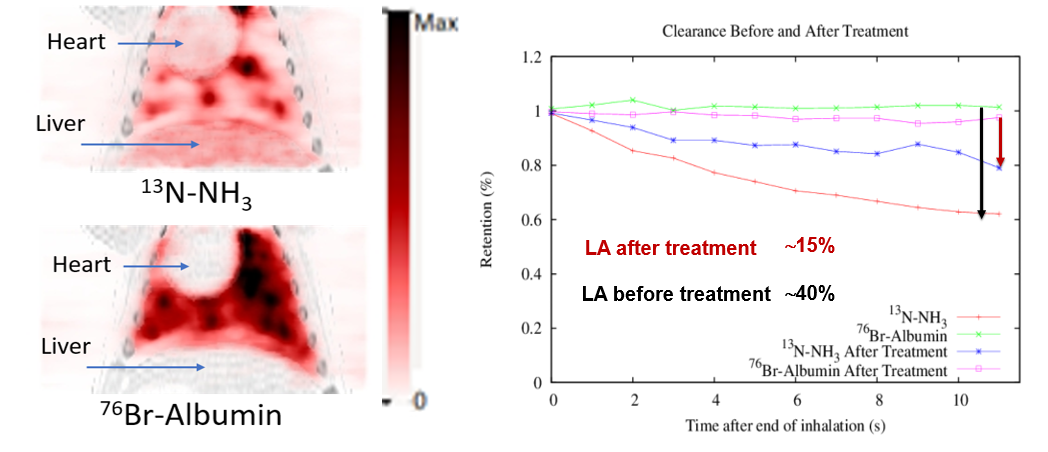| ABSTRACT |
Rationale: Cystic fibrosis (CF), is a disease characterized by airway liquid surface dysregulation, decreased depth of
periciliary fluid and abnormal hydration of mucus, which impede mucociliary clearance and contribute to repeated bacterial
infections. CFspecific biomarkers are needed to provide rapid outcome measures of treatment efficacy. One such a
biomarker is liquid epithelial absorption (LA), which has been shown to be elevated in CF subjects compared with that of nonCF
controls. LA is currently measured dual radionuclide scintigraphy, which is spatially and quantitatively limited, and unable
to assess changes in smaller airways most affected in the early stages of disease progression. To circumvent those
limitations, we applied a new imaging technique (multiplexed PET, mPET) for simultaneous dynamic imaging of two PET
tracers in vivo. Aims: 1) demonstrate the feasibility of measuring quantitatively LA and mucociliary transport (MCT) in the
airways of normal pigs using mPET. 2) evaluate the effect of hypertonic saline solution inhalation, a common therapy for CF, in
LA.
Methods: The LA was estimated as the difference in the clearance rate from the airways of a small molecule:
13NNH3 (cleared by both LA and CMT), and a large molecule: Albumin labeled with 76Br (transported exclusively by MCT). We tested the method by dynamic imaging with a Biograph PETCT scanner the lungs of 10 pigs (~30 kg) that inhaled 1.5 ml of normal saline solution in an aerosol containing both tracers. After 25 min, 5 ml of 5% saline solution was given by aerosol followed, 25 min later, by a second 1.5ml of 5% saline solution in aerosol with only 13NNH3 (as 76BrAlbumin remained in the lungs). The acquired data was processed to obtain separated dynamic images of each radiotracer (See figure). The clearance rate from the lungs of each tracer was measured and LA calculated as the difference between these rates.
Results: The image qualityand quantitative accuracy obtained in these initial studies were higher than those achievable with dualtracer scintigraphy. Results show that a treatment with hypertonic saline of a normal lung reduce LA rate significantly (up to 30% in some areas of the lung). Conclusion: These initial results shows that mPET technology enables simultaneous 3D assessment of LA andMCT in the lungs, and has the potential to become a CFspecific biomarker.
|




